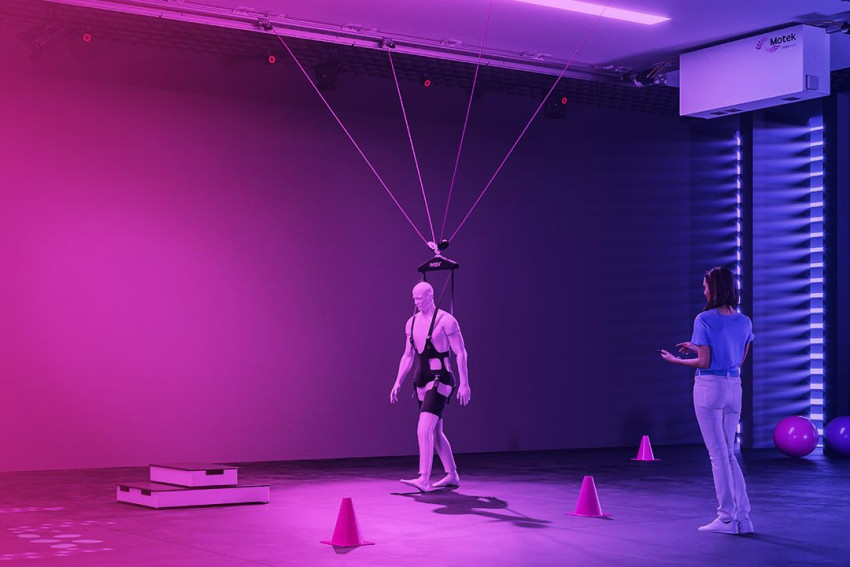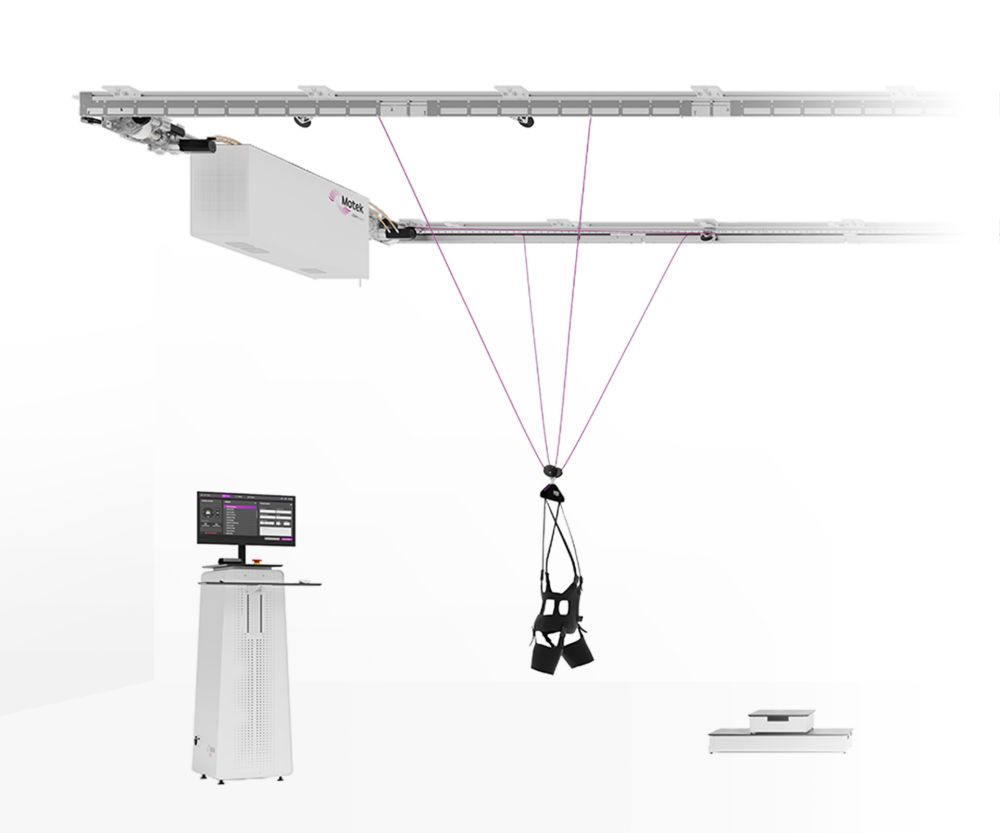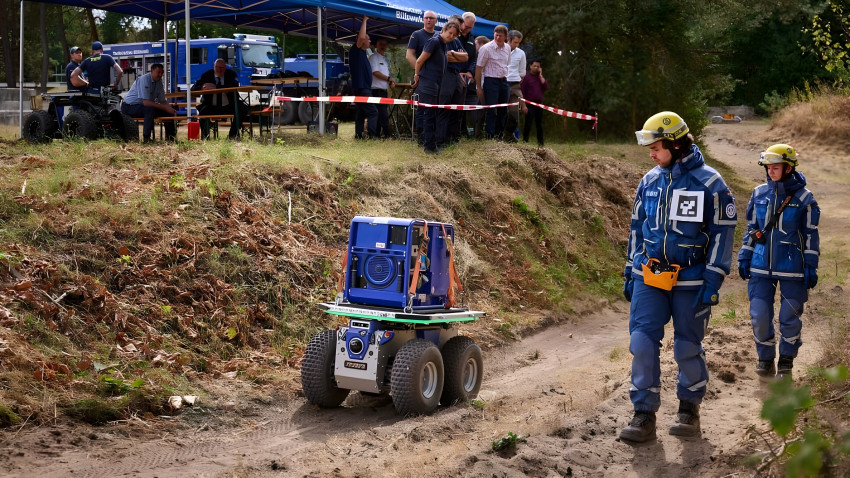
Robot harness helps patients to walk again
The robot harness developed by Delft University of Technology and Swiss university EPFL to help patients learn to walk again has now been placed on the market by Dutch company Motek.
The harness, which is called Rysen, is designed for patients who can make the movements required to walk, but are not yet able to bear their own weight because of insufficient muscle strength or coordination. Earlier this week, Motek, a supplier of rehabilitation equipment, announced that the Rysen would be placed on the market.
SIMPLICITY
'The only thing the harness does is support the weight of the patient,' according to Professor Heike Vallery of Delft University of Technology, who was closely involved in the development of the robot. The therapist who supervises the patient can gradually reduce the support provided by the Rysen as the patient progresses. Ultimately, the patient learns to walk completely unaided.

What makes the Rysen stand out is the simplicity of its design. 'We deliberately kept the device as light as possible to avoid the need for any powerful motors. All it needs is a standard plug in a socket.' This is where the device differs from other walking robots or exoskeletons (see for example ‘Learning to walk again’ about the Lopes gait rehabilitation robot). These often need substantial batteries or a special power supply. ‘Those devices are targeted at a very different market. They are designed for people who need a lot more support.'
ALWAYS PERFECTLY UPRIGHT
Patients in a Rysen can enjoy remarkable freedom of movement. ‘You can walk in any direction you want to in the practice room, the harness will always follow.' Vallery designed an ingenious cable and pulley system to allow this.

The lifting system is designed to move more or less freely with the patient. ‘The motors are only needed to correct the lifting system.’ Sensors monitor a patient’s position, so a patient is always lifted almost vertically and not pulled in a certain direction.
POWER FAILURE
Motek developed the device into a product certified for rehabilitation in collaboration with the two universities, Delft University of Technology and EPFL, Swiss company G-Therapeutics, and the Swiss rehabilitation hospital CRR SUVA. In addition to ease of use, safety was a major priority. 'If the power fails, the system automatically locks, so the patient stays upright. We also prevent the system from imposing uncontrolled movements on the patient. The therapist cannot suddenly set the support provided by the harness to zero,’ says Jasper de Beus van Motek. The company installs the device and trains the therapists itself. ‘All the practice room needs is a sufficiently strong ceiling, and enough space for a patient to move around.'
A trial was carried out over the past six months with patients and therapists. The CRR Suva rehabilitation hospital now uses the Rysen as one of its treatment options.
If you found this article interesting, subscribe for free to our weekly newsletter!







